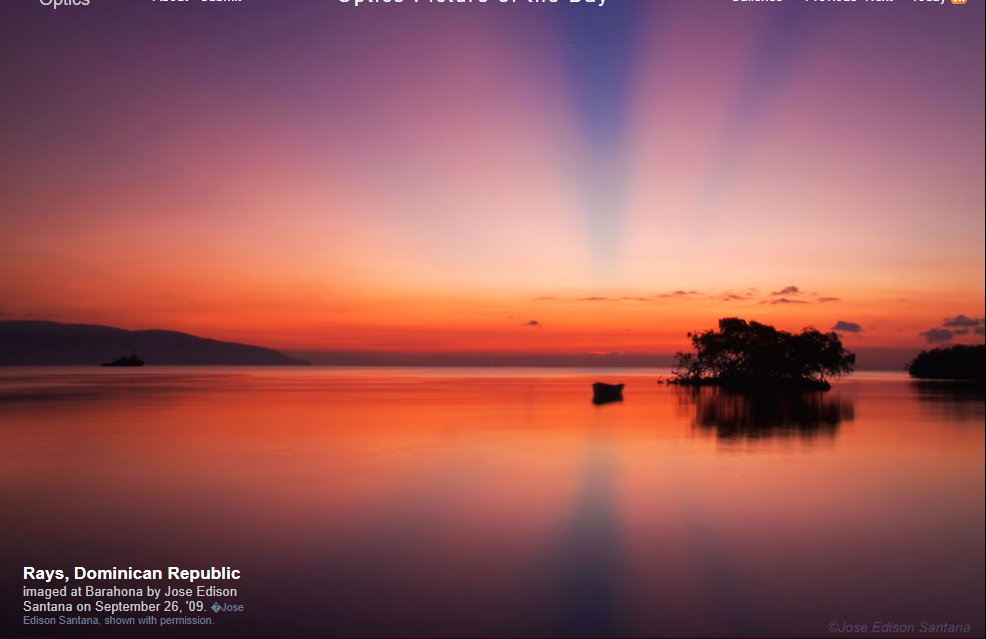Twilight Rays
Twilight Rays: A Spectacular Phenomenon in the Atmosphere
Twilight rays, also known as crepuscular rays, are a breathtaking atmospheric optics phenomenon that occurs during twilight hours. These rays appear as long, soft-edged shadows that cross the colorful twilight sky. While they are often associated with volcanic eruptions due to the presence of sulfate aerosols, they can occur at any time and do not necessarily require volcanic activity. In this article, we will explore the fascinating nature of twilight rays and delve into the various factors that contribute to their formation.
The Science Behind Twilight Rays
Twilight rays are essentially beams of sunlight that have been scattered by dust or other particles in the atmosphere. As the sun sets or rises, its rays pass through gaps in clouds or other obstructions, creating a stunning visual display. The scattering of light by small particles in the atmosphere causes the rays to become more visible, appearing as distinct beams of light against the darkening sky.
Volcanic Eruptions and Twilight Rays
One of the most notable occurrences of twilight rays is after volcanic eruptions. During these events, volcanic ash and sulfate aerosols are injected high into the atmosphere. These particles scatter sunlight in all directions, enhancing the visibility of the rays during twilight hours. The long-lasting effects of volcanic eruptions can result in vibrant and contrasting colors in the twilight sky, with purple shadows accentuating the beauty of the scene.
Factors Influencing Twilight Ray Formation
While volcanic eruptions can intensify the appearance of twilight rays, they are not the sole factor responsible for their occurrence. Several other elements contribute to the formation of these stunning atmospheric phenomena:
-
Clouds: The presence of clouds can enhance the visibility of twilight rays by acting as a canvas against which the rays are illuminated. Clouds can also cast their own shadows, adding depth and complexity to the scene.
-
Atmospheric Dust and Pollution: Dust particles and pollutants in the atmosphere can scatter sunlight, creating a haze that makes twilight rays more prominent. Urban areas with high pollution levels may exhibit more pronounced and colorful twilight rays.
-
Geographical Features: Mountains, hills, and other topographical features can obstruct the path of sunlight, creating gaps through which the rays can pass. This interaction between light and landscape contributes to the formation of visually stunning twilight rays.
The Colors of Twilight Rays
Twilight rays exhibit a wide range of colors, adding to their captivating allure. The specific colors observed depend on various factors, including the scattering properties of the particles in the atmosphere and the angle at which the sunlight interacts with them. Common colors seen in twilight rays include:
-
Pink and Purple: These hues are often associated with volcanic twilight rays, as sulfate aerosols from eruptions can scatter shorter wavelengths of light, resulting in a pink or purple glow.
-
Orange and Yellow: These warm tones are more commonly observed during regular twilight hours when the sun is closer to the horizon. The scattering of longer wavelengths of light by atmospheric particles creates these vibrant colors.
Capturing the Beauty of Twilight Rays
Photographers and sky enthusiasts often seek to capture the ethereal beauty of twilight rays. To photograph these mesmerizing phenomena, consider the following tips:
-
Find a Clear View: Position yourself in an area with an unobstructed view of the horizon to maximize your chances of witnessing and capturing twilight rays.
-
Adjust Exposure Settings: Experiment with exposure settings on your camera to capture the subtle nuances of light and shadow present in twilight rays.
-
Include Foreground Elements: Incorporating interesting foreground elements, such as trees or buildings, can add depth and context to your twilight ray photographs.
A Reminder of Nature's Splendor
Twilight rays serve as a reminder of the awe-inspiring beauty of our natural world. Whether they are enhanced by volcanic eruptions or simply a result of atmospheric conditions, these rays captivate viewers with their delicate shadows and vibrant colors. Take a moment to appreciate the magic of twilight rays, and perhaps you'll be fortunate enough to witness their enchanting display in person.

Rays, Dominican Republic imaged at Barahona by Jose Edison Santana on September 26, '09. �Jose Edison Santana, shown with permission.
The long soft edged purple shadows crossing the pink twilight are characteristic of those seen after volcanic eruptions. Sulfate aerosol from Sarychev was still circulating the Northern hemisphere at this time and could have produced the bright twilight with contrasting shadows. however, colourful twilights occur at any time - they do not necessarily need a volcano.
Note: this article has been automatically converted from the old site and may not appear as intended. You can find the original article here.
Reference Atmospheric Optics
If you use any of the definitions, information, or data presented on Atmospheric Optics, please copy the link or reference below to properly credit us as the reference source. Thank you!
-
<a href="https://atoptics.co.uk/blog/twilight-rays-3/">Twilight Rays</a>
-
"Twilight Rays". Atmospheric Optics. Accessed on November 26, 2024. https://atoptics.co.uk/blog/twilight-rays-3/.
-
"Twilight Rays". Atmospheric Optics, https://atoptics.co.uk/blog/twilight-rays-3/. Accessed 26 November, 2024
-
Twilight Rays. Atmospheric Optics. Retrieved from https://atoptics.co.uk/blog/twilight-rays-3/.